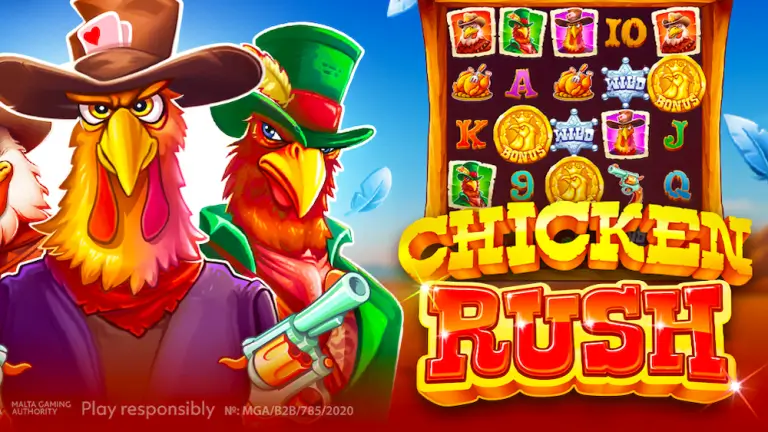The world of online gaming rarely sees such a perfect example of “if it ain’t broke, don’t fix it” meeting “but let’s make it even better anyway.” When the original Chicken Road first strutted onto gaming platforms, it captured hearts with its deceptively simple premise and surprisingly deep strategic gameplay. Now, with Chicken Road 2 crossing the finish line, we’re witnessing something special – a sequel that respects its predecessor while boldly venturing into uncharted territory.
Having spent considerable time with both games, I can confidently say that this evolution represents one of the most thoughtful approaches to game development I’ve encountered in recent years. The developers haven’t just slapped a “2” on the end and called it a day. Instead, they’ve crafted an experience that feels both familiar and refreshingly new, maintaining the core DNA that made the original so compelling while introducing innovations that genuinely enhance the gameplay experience.
What strikes me most about this comparison is how it reflects the broader conversation about innovation versus tradition in gaming. Chicken Road 2 doesn’t abandon the formula that worked; it refines, expands, and elevates it. This approach demonstrates a deep understanding of what players loved about the original while acknowledging that expectations have evolved. The result is a gaming experience that feels like coming home to a house that’s been beautifully renovated – everything you loved is still there, just better.
Core Gameplay Mechanics. What Stayed and What Changed
At its heart, both games share the same fundamental appeal that has made road-crossing games a beloved genre for decades. The original Chicken Road established a rhythm that felt almost meditative – the careful observation, the split-second timing, the satisfying progress across increasingly challenging terrain. Players found themselves drawn into a zen-like state where success depended on patience, observation, and precise execution. This core experience remains beautifully intact in the sequel, proving that the developers understood what made their original creation so addictive.
The genius of Chicken Road lay in its ability to make simple mechanics feel profound. Each crossing required players to read the traffic patterns, identify safe windows, and execute their moves with precision. The feedback loop was immediate and satisfying – you either made it across or you didn’t, with no ambiguity about the outcome. This clarity of cause and effect created a learning curve that felt fair and rewarding, encouraging players to improve through practice rather than luck.
However, Chicken Road 2 takes these proven mechanics and adds layers of sophistication without compromising the essential simplicity. The basic premise remains unchanged – guide your character safely across busy roads and obstacle-filled terrain – but the execution has been refined with subtle improvements that enhance the player experience. Movement feels more responsive, visual feedback is clearer, and the overall flow has been polished to near-perfection.
What’s particularly impressive is how the sequel manages to feel both familiar and fresh simultaneously. Returning players will immediately recognize the core gameplay loop they love, while newcomers won’t feel overwhelmed by unnecessary complexity. The developers have struck that delicate balance between evolution and revolution, creating a game that honors its heritage while pushing the boundaries of what the format can achieve. This thoughtful approach to game design deserves recognition in an industry often obsessed with radical reinvention.
New Obstacles and Challenges. How Chicken Road 2 Raises the Stakes
The original Chicken Road was no slouch when it came to presenting players with varied and engaging challenges. From speeding vehicles to moving platforms, the game offered a steady progression of obstacles that kept players on their toes. Each level introduced new elements at a measured pace, ensuring that players never felt overwhelmed while maintaining a sense of forward momentum and discovery. The challenge curve was expertly crafted, providing just enough difficulty to keep players engaged without crossing the line into frustration.
Chicken Road 2 takes this foundation and builds upon it with remarkable creativity and sophistication. The sequel introduces dynamic weather systems that affect visibility and movement, creating an entirely new layer of strategic consideration. Rainy conditions might slow down traffic but reduce visibility, while sunny days offer clear views but faster-moving obstacles. These aren’t just cosmetic changes – they fundamentally alter how players approach each crossing, adding depth without complexity.
Perhaps most impressively, the game introduces what I can only describe as “living levels” – environments that evolve and change as you play. Construction zones appear and disappear, traffic patterns shift based on time of day simulation, and seasonal changes affect both the visual presentation and gameplay mechanics. A route that worked perfectly in spring might become treacherous in winter conditions. This dynamic approach keeps the game feeling fresh even after extended play sessions, as players can never rely entirely on memorized patterns.
The variety of new obstacle types is genuinely impressive, ranging from emergency vehicles that demand immediate right-of-way to road maintenance crews that create temporary but significant barriers. Each new challenge feels purposeful rather than arbitrary, contributing to a sense of living, breathing world rather than a static puzzle to be solved. The developers have clearly put considerable thought into how each element contributes to the overall experience, creating challenges that feel organic and believable within the game’s universe.
Power-Ups and Abilities. Enhanced Arsenal for Modern Players
One area where the original Chicken Road showed its age was in the limited options available to players facing increasingly difficult challenges. While the pure skill-based approach had its charm, there were moments when a little extra help would have enhanced rather than diminished the experience. The game’s commitment to minimalism, while admirable, sometimes left players feeling helpless in the face of particularly challenging sections.
Chicken Road 2 addresses this limitation with a carefully curated selection of power-ups and abilities that enhance gameplay without trivializing the core challenge. The “Speed Boost” ability provides temporary acceleration for navigating particularly dense traffic, while the “Time Slow” power-up gives players a brief moment to assess complex situations. Most cleverly, the “Safe Crossing” ability creates a temporary protected lane – but with limited uses per level, forcing players to save it for truly critical moments.
What sets these additions apart from typical power-up systems is their integration with the core gameplay philosophy. Rather than making the game easier, these abilities create new strategic considerations. When should you use your limited speed boosts? Is it worth saving the time slow ability for the final crossing, or should you use it earlier to build momentum? These decisions add depth to the strategic layer without overwhelming casual players who simply want to enjoy the basic experience.
The progression system that governs these abilities is particularly well-designed. Players earn upgrade points through successful crossings and bonus objectives, but the improvements are incremental rather than game-changing. A fully upgraded speed boost might last a second longer or recharge slightly faster, but it never becomes a substitute for skill and observation. This approach maintains the integrity of the core gameplay while providing a sense of progression that keeps players engaged over the long term. It’s a masterclass in how to add complexity without losing focus.
Timing vs. Planning. Contrasting Strategic Approaches Between Versions
The strategic depth of the original Chicken Road centered primarily around timing and pattern recognition. Success depended on developing an almost intuitive sense of rhythm – understanding the flow of traffic, recognizing safe windows, and executing moves with precise timing. This approach rewarded patience and observation, creating a gameplay experience that felt both relaxing and engaging. Veterans of the original game developed an almost zen-like approach, finding satisfaction in the perfect execution of well-timed crossings.
This timing-focused approach created a particular type of player experience that many found deeply satisfying. There’s something inherently appealing about mastering a skill that depends entirely on your ability to read situations and execute with precision. The original game became a showcase for this pure approach to skill development, where improvement came through practice and observation rather than character progression or equipment upgrades.
Chicken Road 2 maintains this timing-based foundation while introducing elements that reward longer-term planning and strategic thinking. The addition of multiple route options means players must now consider not just when to move, but which path to take. Some routes might be shorter but more dangerous, while others offer safer passage at the cost of time. Weather conditions and dynamic obstacles mean that the optimal path for one attempt might be suboptimal for the next, requiring players to adapt their strategies in real-time.
The interplay between timing and planning creates a rich strategic environment that appeals to different types of players. Those who loved the pure timing challenge of the original will find that element preserved and enhanced, while players who prefer tactical decision-making have new layers to explore. Most importantly, these two approaches complement rather than compete with each other, creating a more complete and satisfying strategic experience. The game rewards both quick reflexes and thoughtful preparation, acknowledging that great gameplay can emerge from multiple sources.
Visual and Audio Upgrades. How Presentation Affects Gameplay Strategy
While the original Chicken Road was charming in its simplicity, there’s no denying that its visual presentation was functional rather than spectacular. The clean, minimalist aesthetic served the gameplay well, ensuring that players could easily distinguish between different elements and obstacles. However, the limited visual variety sometimes made extended play sessions feel repetitive, and certain gameplay elements could have benefited from clearer visual communication.
Chicken Road 2 transforms the visual experience while maintaining the clarity that made the original so playable. The art style has evolved from simple geometric shapes to a more detailed but equally clean presentation that never sacrifices functionality for beauty. Vehicle types are now instantly recognizable at a glance, weather effects provide both atmosphere and gameplay information, and the overall visual hierarchy guides players’ attention exactly where it needs to go. It’s a masterclass in how visual upgrades can enhance rather than distract from core gameplay.
The audio design deserves particular praise for how it contributes to strategic gameplay. Different vehicle types now have distinct audio signatures, allowing experienced players to identify approaching threats even when they’re off-screen. The subtle audio cues for power-up availability and weather changes provide crucial information without overwhelming the soundscape. Environmental audio helps create a sense of immersion that makes the game world feel alive and reactive to player actions.
Perhaps most importantly, the presentation upgrades serve the gameplay rather than existing for their own sake. Every visual and audio enhancement has a functional purpose, whether it’s providing clearer feedback about game state, offering additional strategic information, or simply making the experience more enjoyable during extended play sessions. This holistic approach to presentation design demonstrates a deep understanding of how aesthetics and functionality can work together to create superior gaming experiences. The developers have clearly understood that in a strategy-focused game, every element should serve the player’s ability to make informed decisions.
Winning Techniques. Proven Tactics for Mastering Both Games
Success in the original Chicken Road came down to mastering a few key principles that, once understood, could be applied across virtually any situation. The most fundamental was learning to read traffic patterns rather than individual vehicles – understanding that successful crossings depended on recognizing the rhythm of the road rather than timing individual gaps. This pattern recognition separated novice players from experts, creating a clear skill progression that rewarded dedicated practice.
The “stop and observe” technique became essential for advanced play in the original game. Rather than rushing forward at every opportunity, successful players learned to pause at safe positions and study the upcoming challenges. This patience-based approach often revealed safer routes and better timing windows that weren’t immediately obvious. Combined with the ability to recognize “safe zones” – positions that offered temporary respite from moving obstacles – these techniques formed the foundation of expert-level play.
Chicken Road 2 builds upon these established techniques while introducing new strategic considerations that expand the tactical toolkit available to players. The route selection system now makes initial planning as important as execution, with successful players learning to identify optimal paths before beginning each level. The dynamic obstacle system means that adaptability has become as crucial as pattern recognition – the ability to modify your strategy mid-crossing when conditions change unexpectedly.
The integration of power-ups and abilities creates an entirely new layer of tactical decision-making that didn’t exist in the original. Expert players must now balance resource management with traditional timing skills, knowing when to save abilities for crucial moments versus using them to create easier situations earlier in the level. The most successful approach combines the patience and observation skills from the original game with more aggressive resource utilization that takes advantage of the sequel’s expanded mechanics. This evolution of tactical thinking represents the natural progression of the series, honoring its roots while embracing new possibilities for strategic depth and player expression.
Conclusion. A Sequel That Honors Its Heritage
After extensive time with both games, it’s clear that Chicken Road 2 represents something increasingly rare in the gaming industry – a sequel that genuinely improves upon its predecessor without losing the essential qualities that made the original special. The developers have demonstrated remarkable restraint and wisdom in their approach, choosing enhancement over reinvention, depth over complexity, and player experience over flashy features.
The relationship between these two games offers a compelling case study in how to evolve a successful formula. Rather than abandoning what worked, the development team has carefully identified areas for improvement and addressed them with surgical precision. The result is a gaming experience that feels both familiar and fresh, accessible to newcomers while offering new depths for veterans to explore.
What impresses me most about this evolution is how it reflects a genuine understanding of the player community and their needs. The developers clearly listened to feedback from the original game, identifying pain points and areas of untapped potential without losing sight of what made the game special in the first place. This player-focused approach to development deserves recognition and emulation throughout the industry.
Looking at both games together, we see a perfect example of how thoughtful iteration can create experiences that are greater than the sum of their parts. Chicken Road established a solid foundation and proved the viability of the concept, while Chicken Road 2 builds upon that foundation to create something that feels complete and fully realized. For players and developers alike, this pairing represents a masterclass in how to create meaningful sequels that honor their heritage while pushing the medium forward. The road ahead looks bright indeed.



